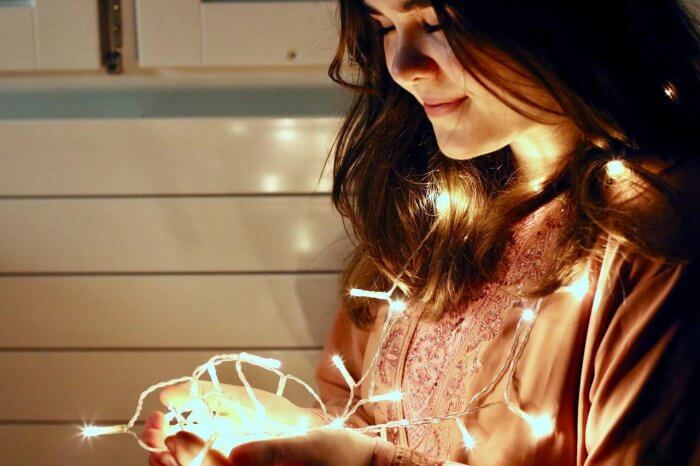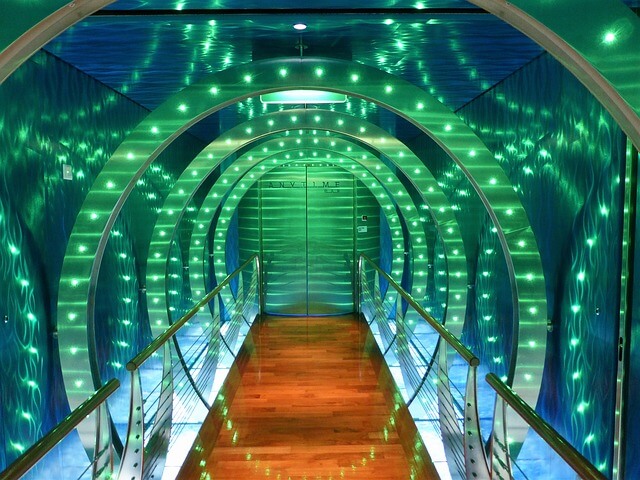
LED lighting has become a huge deal in the past decade and for a good reason too. Not only are they more cost-effective, but massive usage of these lights instead of traditional ones means a huge cut of C02 emissions. You’d be amazed to know just how much energy is spent on lighting around the world, so every LED bulb that’s installed instead of a halogen one is going to help slow down the climate change that’s starting to threaten our very existence. So if you’re interested in LED lighting, here are some fun facts you probably never heard about them.
#1 – Uniqueness
The unique characteristics that LED lights bring include ease of maintenance, being very resistant to breakage, the ability to focus their light (opposed to it being spread in each direction like with traditional bulbs), but most of all – their compact size. All of these qualities make LED lights being used in a wide range of home appliances, traffic lights, and even vehicle brake lights. Not to mention just how popular LED TV’s have become in recent years.
#2 – LED Bulbs Aren’t That New
Even though LED bulbs seem like the future of lighting since their rise in popularity over the last few years, the actual fact is that LED lights have been around for more than 50 years. A man named Nick Holonvak Jr. invented them in the 1960s, but they never really got much popularity until the 1990s.
#3 – Energy Efficiency is Through the Roof
While LED bulbs use almost 100% of the energy they use to produce the light, incandescent (or halogen) bulbs only use about 10% of energy. The other 90% of energy is actually wasted through heating, which can be quite a pain in the summer since it will also increase your air-conditioning bills. So it’s fair to say that LED bulbs are almost 10 times more energy-efficient than their traditional counterparts.
#4 – Recyclability
While incandescent bulbs create a lot of electronic waste, they also contain mercury which can be highly poisonous. That’s why you always need to be careful when throwing away your old light bulbs. On the other hand, LED lights are up to 95% recyclable while also containing no mercury at all. If you want to save the planet, the first thing you need to do is to switch to these LED beauties! Oh, also keep in mind that LED bulbs have a much longer lifespan and you’ll get an idea just how safer they are for our surroundings.
#5 – LED Means Less Bugs
Anyone who has a porch knows just how many insects an incandescent bulb attracts. This is because these kinds of lights emit a lot of IR (Infrared) and UV (Ultraviolet) radiation. And guess who loves those? Bugs! By switching to LED lights you’ll immediately notice a huge decrease in bug attraction, or they might as well just disappear from your porch.
#6 – Widespread Usage Means a Lot of Money Saved
If LED lights were installed instead of traditional ones in every home in the US, it would save up to 350 TWh of energy in the next 10 years. That means LED lighting would not only save about 30 billion dollars, but it would also mean we’d need 40 fewer power plants to produce enough energy for everyone in the US. That’s an equivalent of getting rid of 600.000 motor vehicles when it comes to C02 emissions – and that’s quite huge when you think about it.
#7 – Holiday Savings
If only half of all bulbs that are used around Christmas in the US were switched to LED bulbs, Americans could save up to 18 billion dollars each year. Think about what can be done with that money, instead of literally throwing it to waste.
#8 – Instant Brightness
Due to their design, LED bulbs will instantly reach their luminosity potential when you power them on, while traditional light bulbs need time to heat up (since the heat is a major part of how they produce light, and why they waste so much energy).
#9 – LED Lights Breed Less Bacteria
When delicatessen displays (or any kind of fresh food) uses LED lights instead of their traditional counterparts, they are proven to produce fewer bacteria. This is because the bacteria thrive in high-heat settings, so LED lights are great for that since they produce way less heat. Try touching a LED bulb when it’s on and you’ll see what I’m talking about. If you’d do the same with halogen or incandescent bulbs you’d get a first or second degree burn on your fingers.
#10 – Huge Life Span
While incandescent lamps last about 1000 hours of usage, LED lamps will last up to 50 times longer than that. This means that if you leave your LED light on 24 hours a day, it would last for an amazing 6 years! Most of us use artificial light for about 8-10 hours a day, so this basically means that you can have a single LED bulb lasting for 13-17 years!
Bottom Line
There are many things we can do for our planet right now, from reducing plastic waste to reducing C02 emissions from cars and factories. But probably the simplest thing every single one of us can do is to switch to LED bulbs which won’t only help our planet, but also our electric bills. We hope that you’ve learned something new about LED lights and that you’ll soon be on your way to getting a full arsenal of these if you haven’t already.

